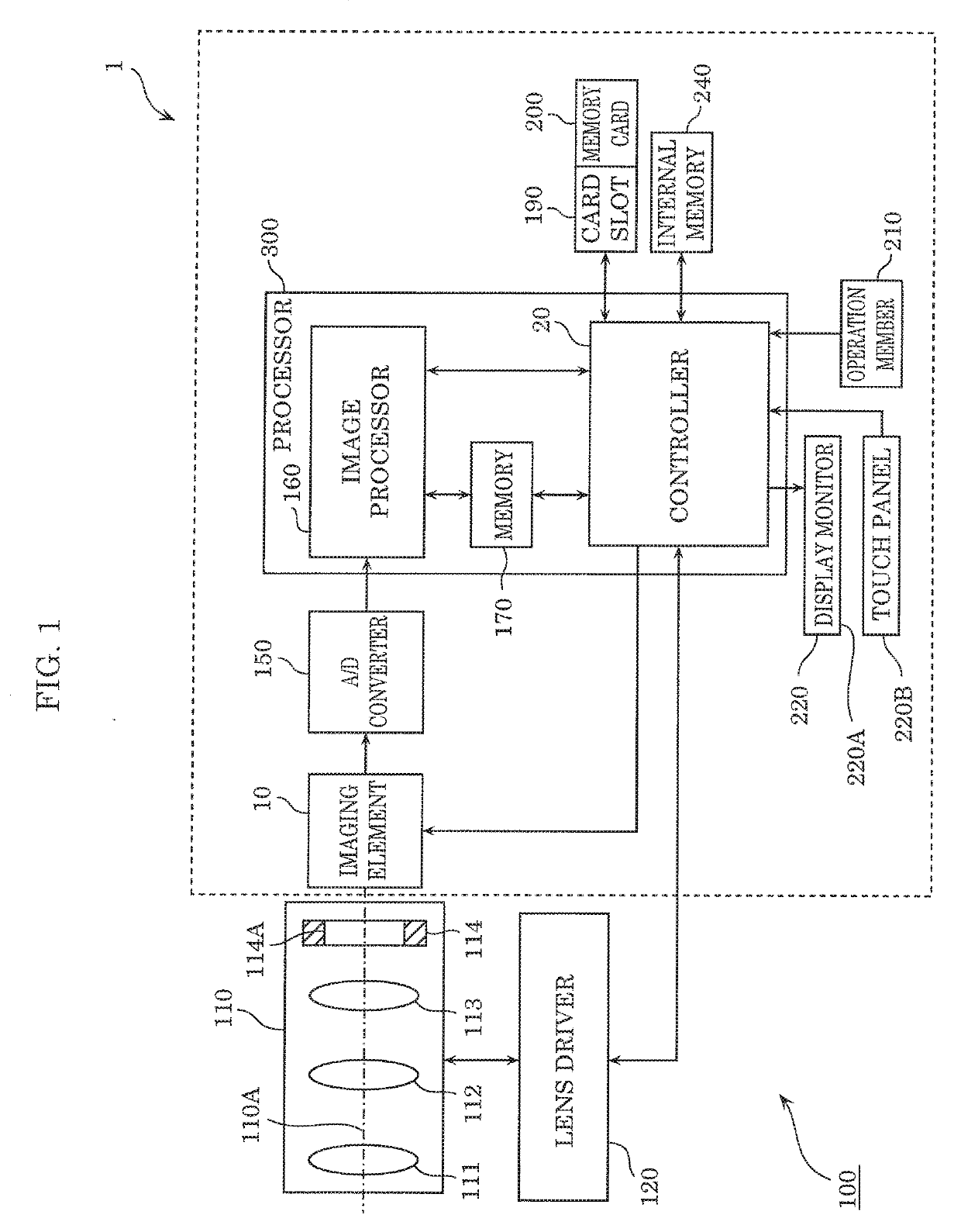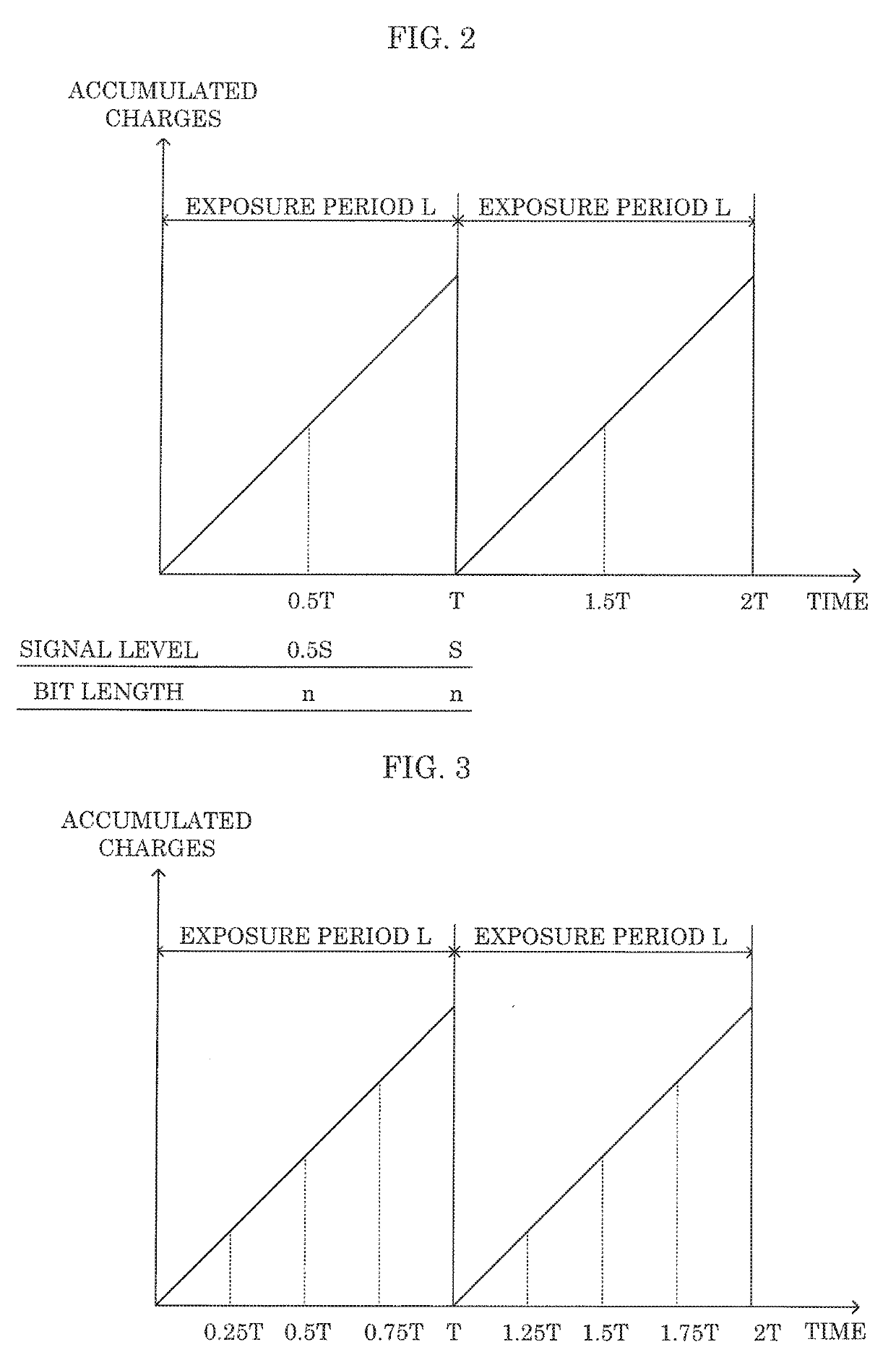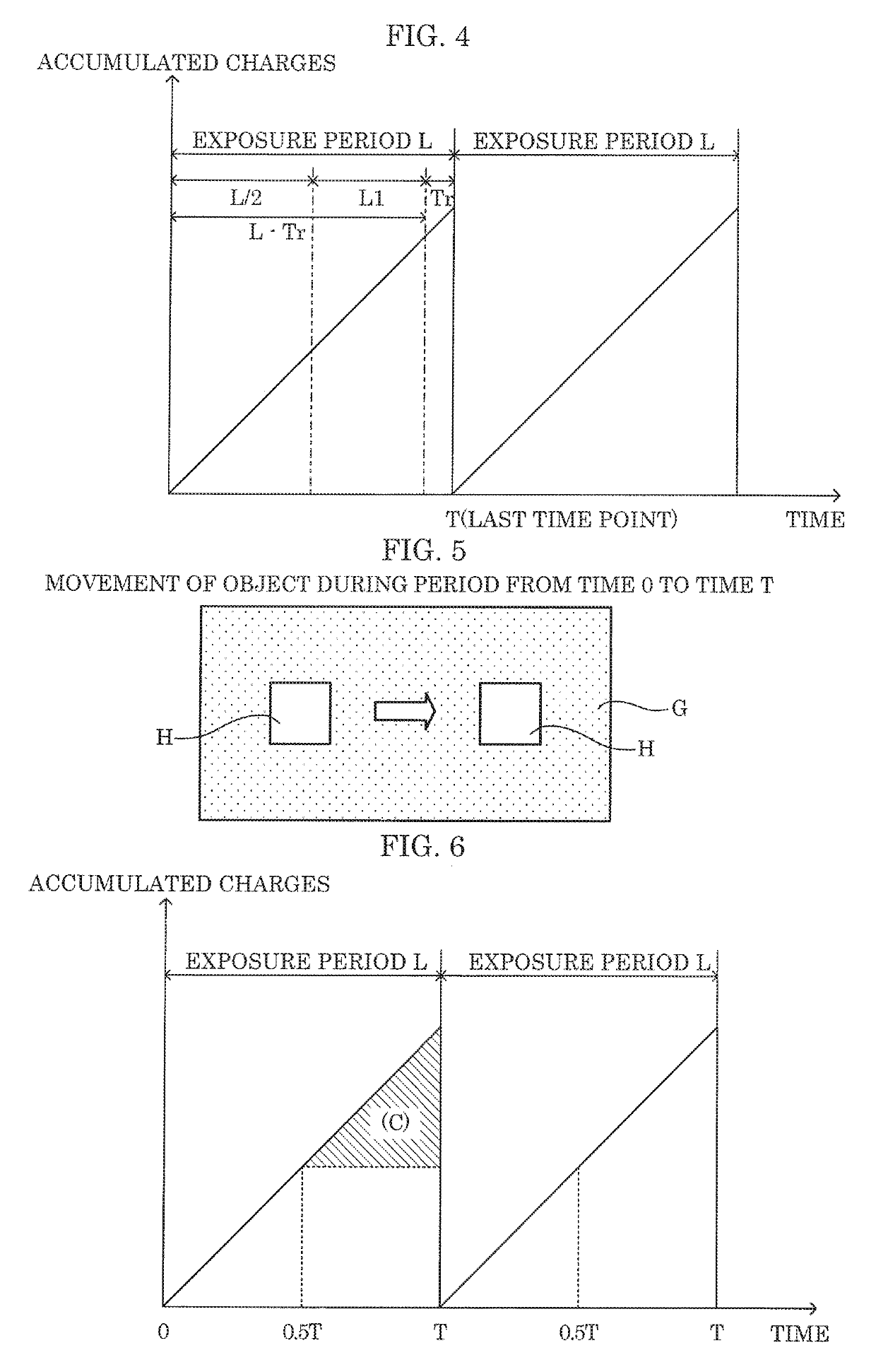Imaging device and camera
- Summary
- Abstract
- Description
- Claims
- Application Information
AI Technical Summary
Benefits of technology
Problems solved by technology
Method used
Image
Examples
embodiment 1
[0032]A configuration and operation of an imaging device according to Embodiment 1 will be described below.
[1. Configuration]
[0033]FIG. 1 is a block diagram illustrating a configuration of camera 100 according to Embodiment 1.
[0034]Camera 100 includes optical system 110, lens driver 120, and imaging device 1.
[0035]Optical system 110 includes one or more lenses that focus external light on imaging element 10 of imaging device 1. Specifically, optical system 110 includes zoom lens 111, hand shake correction lens 112, focus lens 113, and diaphragm 114. Zoom lens 111 is caused to move along optical axis 110A, thereby enabling an object image to be enlarged or reduced. Further, focus lens 113 is caused to move along optical axis 110A, thereby enabling focusing of the object image to be adjusted. Furthermore, hand shake correction lens 112 is movable within a plane perpendicular to optical axis 110A of optical system 110. Hand shake correction lens 112 is moved in a direction in which sha...
modified example 1
[0061]Embodiment 1 described above illustrates a case where image signals are read out twice within one exposure period L. However, the number of times of reading out image signals within one exposure period L may be three times or more. In any case, image processor 160 reads out image signals a plurality of times from imaging element 10 within one exposure period L, calculates a target gain value based on a target level calculated based on the signal level of the last read-out image signal in one exposure period L, and an added signal obtained by adding up the plurality of read-out image signals, and multiplies the added signal by the target gain value.
[0062]This Modified Example 1 illustrates a case where image signals are read out four times within one exposure period L.
[0063]FIG. 3 is an explanatory diagram illustrating a read-out timing of an image signal according to Modified Example 1. As illustrated in FIG. 3, image processor 160 reads out image signals four times from imagi...
modified example 2
[0066]Embodiment 1 described above illustrates a case where one exposure period L is equally divided and image signals are read out at the divided points. However, if image signals are read out a plurality of times within one exposure period L, the read-out timing is not particularly limited. This Modified Example 2 illustrates a case where image signals are read out a plurality of times without equally dividing exposure period L.
[0067]FIG. 4 is an explanatory diagram illustrating a read-out timing of an image signal according to Modified Example 2.
[0068]As illustrated in FIG. 4, image processor 160 reads out image signals twice within one exposure period L. Specifically, image processor 160 sets the last read-out timing in the number of times of reading out image signals within one exposure period L as a last time point in the exposure period, and sets the read-out timing other than the last read-out timing to be within period L1 equal to or longer than L / 2 of the exposure period a...
PUM
 Login to View More
Login to View More Abstract
Description
Claims
Application Information
 Login to View More
Login to View More - R&D
- Intellectual Property
- Life Sciences
- Materials
- Tech Scout
- Unparalleled Data Quality
- Higher Quality Content
- 60% Fewer Hallucinations
Browse by: Latest US Patents, China's latest patents, Technical Efficacy Thesaurus, Application Domain, Technology Topic, Popular Technical Reports.
© 2025 PatSnap. All rights reserved.Legal|Privacy policy|Modern Slavery Act Transparency Statement|Sitemap|About US| Contact US: help@patsnap.com



